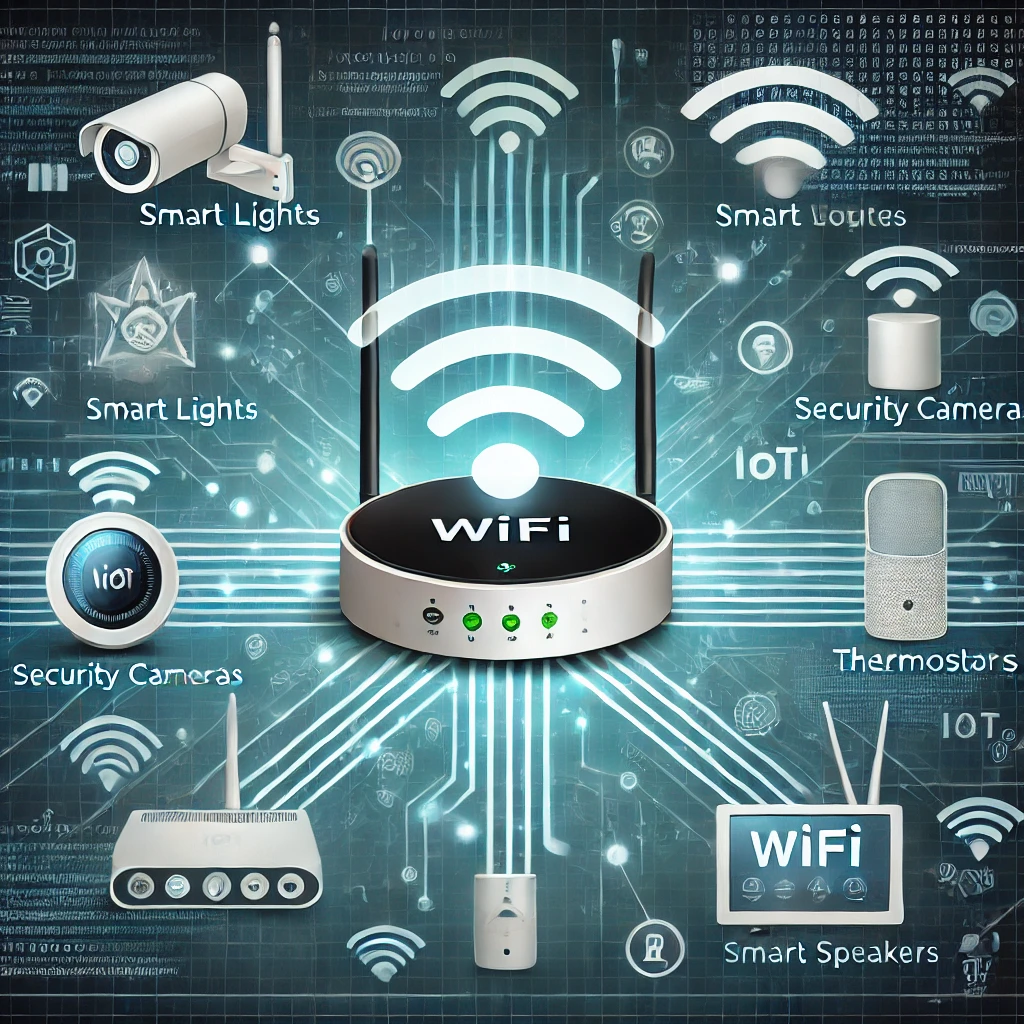The Internet of Things (IoT) has revolutionized how we connect and interact with devices, transforming homes, offices, and industries into smart, automated environments. Central to this transformation is IoT WiFi—a wireless network that enables the integration of a multitude of smart devices. However, with the convenience and power of IoT WiFi come two critical challenges: compatibility and security. In this article, we’ll explore these challenges and provide insights on how to manage them effectively.
1. Compatibility: Ensuring a Smooth Integration Across Devices
One of the biggest hurdles in setting up an efficient IoT WiFi network is ensuring compatibility among devices. Since IoT devices come from various manufacturers, they may use different protocols, standards, and frequencies. This can make it challenging for them to communicate effectively over the same network.
a. WiFi Standards and Frequencies
Most IoT devices operate on WiFi standards such as 802.11n, 802.11ac, or even the newer 802.11ax (WiFi 6). Ensuring that your router supports these standards is essential for maximum compatibility and performance. Additionally, IoT devices often utilize the 2.4 GHz frequency band, as it offers greater range compared to 5 GHz, but may be more prone to interference. Balancing the two bands to optimize connectivity for your specific setup is key.
b. Compatibility with IoT Protocols
IoT devices use different communication protocols such as Zigbee, Z-Wave, Bluetooth, and WiFi. While WiFi-enabled devices are directly compatible with IoT WiFi networks, other protocols may require additional hubs or bridges. When building your IoT network, it’s important to choose devices that are either WiFi-native or can integrate seamlessly using compatible hubs. Investing in a versatile router or hub that supports multiple protocols can simplify your setup.
c. Universal Compatibility: The Role of Platforms
Platforms like Amazon Alexa, Google Home, and Apple HomeKit serve as centralized hubs, helping to bridge the gap between different smart devices. However, not all devices are compatible with all platforms. Checking for compatibility with your preferred platform before purchasing devices is crucial. This ensures that all components of your smart environment can work together, providing a cohesive and efficient user experience.
2. Security: Protecting Your IoT WiFi Network
While IoT WiFi offers tremendous convenience, it also opens up potential security vulnerabilities. Every connected device represents a potential entry point for hackers, making it essential to secure your IoT network effectively.
a. Use a Separate Network for IoT Devices
One of the best practices for securing an IoT network is to set up a separate WiFi network exclusively for IoT devices. By isolating them from your main network, you minimize the risk of a breach affecting your more sensitive devices, such as computers and smartphones, which may hold personal or business-critical information.
b. Strong Authentication and Encryption
To protect your IoT network, make sure your WiFi router uses the latest encryption standard, WPA3. This provides a higher level of security than older protocols like WPA2. Additionally, use strong, unique passwords for your network and each connected device. Avoid default credentials, as these are often targeted by hackers.
Enabling multi-factor authentication (MFA) where possible is another layer of protection, ensuring that only authorized users can access and control your devices.
c. Regular Firmware Updates
IoT devices often have vulnerabilities that manufacturers fix through firmware updates. Regularly updating the firmware of both your router and IoT devices is essential for maintaining security. Many modern devices offer automatic updates—ensure this feature is enabled to minimize the risk of unpatched vulnerabilities.
d. Monitor and Manage Device Access
Use your router’s management tools to monitor which devices are connected to your network. Identify any unfamiliar devices and immediately take action if something seems suspicious. Routers with built-in IoT security features can also alert you to potential threats, providing an added layer of protection.
e. Network Segmentation and Firewalls
Advanced users may implement network segmentation using VLANs (Virtual Local Area Networks) or other firewall rules to separate different types of IoT devices and limit communication pathways between them. This approach reduces the impact of any single compromised device on the overall network.
3. Future-Proofing Your IoT WiFi Network
As technology advances, so do the capabilities and requirements of IoT devices. Investing in a robust WiFi router that supports the latest standards (like WiFi 6) and protocols ensures your network remains compatible with future devices. Moreover, prioritizing routers that offer advanced security features, such as network segmentation and intrusion detection, will help you maintain a secure environment as your IoT ecosystem expands.
Conclusion
IoT WiFi opens up a world of possibilities, transforming homes and offices into efficient, interconnected ecosystems. However, achieving a seamless and secure experience requires careful attention to compatibility and security. By selecting compatible devices, using secure networks, and implementing best practices for network management, you can build a smart environment that is both efficient and safe.
In a world where connectivity is key, understanding and addressing these challenges ensures your IoT network operates smoothly, securely, and efficiently—empowering you to fully embrace the benefits of the smart revolution.

